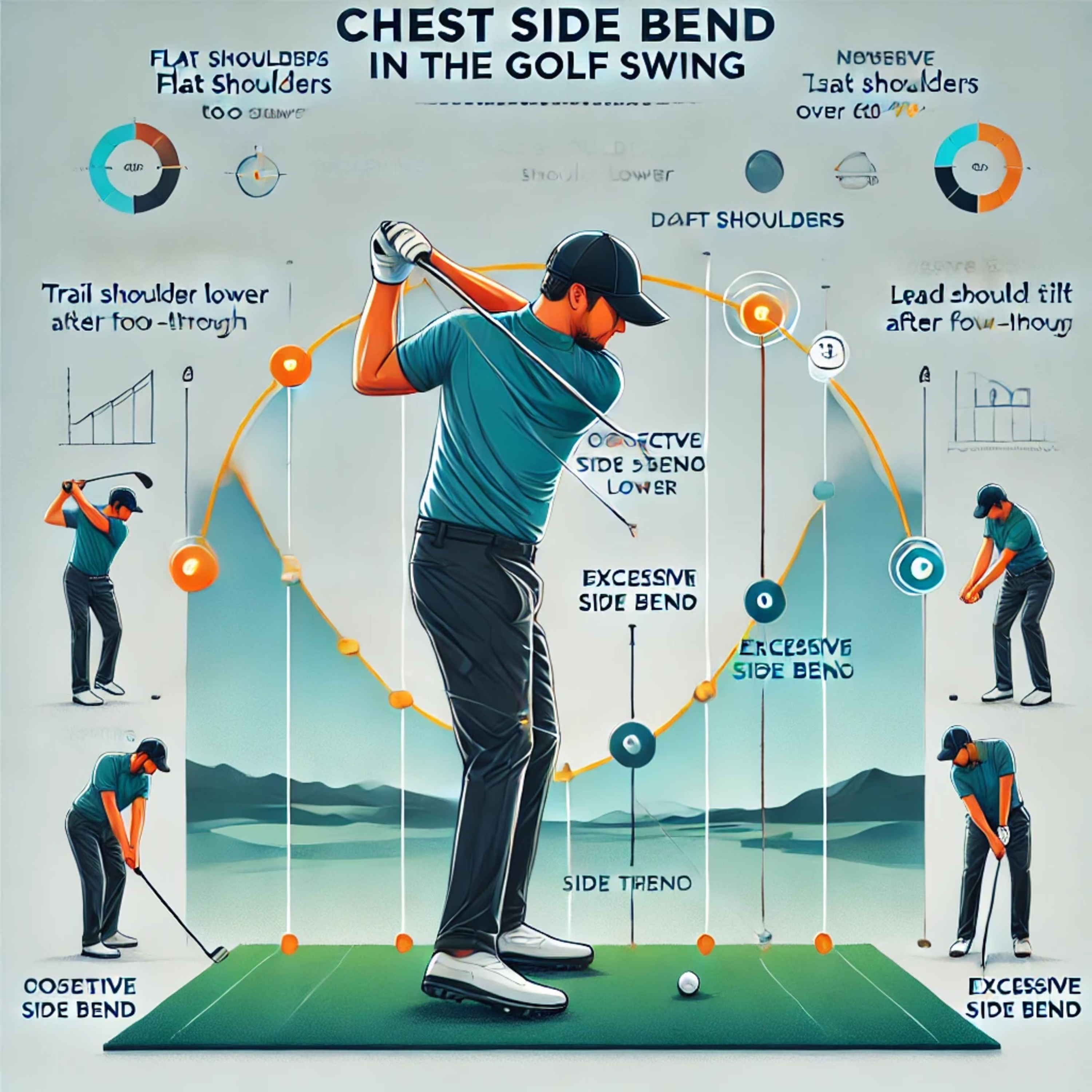#154 🔥 Chest Side Bend in the Golf Swing ⛳
- Author
- Golf247.eu
- Published
- Tue 04 Mar 2025
- Episode Link
- https://podcasters.spotify.com/pod/show/puttin-pro/episodes/154--Chest-Side-Bend-in-the-Golf-Swing-e2ur3ek
The podcast explores the measurement and interpretation of lateral chest movement ("Chest Side Bend") during a golf swing using theSportsBox AI 3D Golf app 📊.Henrik Jentsch, PGA professional, explains the concept, visualizes it using asine wave graph 📉, and analyzes typical values at different points in the swing (setup, backswing, impact, follow-through).
He highlights theimportance of measuring chest side bend withSportsBox AI to identifyweaknesses ⚠️ andpotential injury risks 🤕, especially in cases ofexcessive side bend after impact.Common errors, such asflat shoulders 🏌️♂️⬜ orexcessive lateral tilt 🎯, are discussed.
🔎Key Insights: How Chest Side Bend Affects Swing Efficiency
✅Definition & Measurement
- Chest side bend is thetilting of a line from one shoulder to the other below the horizontal plane 📏.
- This movement creates asine wave pattern 📈 in the motion graph over time, which can beprecisely tracked with SportsBox AI.
✅Phases of the Swing
The golf swing is divided into three phases:
1️⃣Backswing: Setup ➝ Top of the backswing
2️⃣Downswing: Top of the backswing ➝ Impact
3️⃣Follow-through: Impact ➝ Finish
✅Positive & Negative Side Bend
- Positive side bend ➡️ Trail shoulder lower
- Negative side bend ⬅️ Lead shoulder lower
- At the start, side bend istoward the trail side as the trail shoulder is naturally lower 🤷♂️.
✅Backswing vs. Impact Comparison
📌 At thetop of the backswing andimpact, side bend values are similar:
- Men 👨:36° (backswing) ➝32° (impact)
- Women 👩:31° (backswing) ➝29° (impact)
📌 The similarity occurs because the upper bodyrotates around a stable spine 🔄.
⚠️Flat Shoulders ("Standing Up")
🚨 Mistake: No side bend ➝ "flat shoulders" 🔄
📉 Result: Golferloses posture, reducing efficiency.
⚠️Excessive Side Bend After Impact
🚨 If side bendexceeds 60° after impact:
❌ Can cause a"crunch" effect on the right side of the spine 💥.
✅Pro golfers typically stay within 52° 📏.
📊SportsBox AI provides accurate real-time data, helping golfers and coaches detect these inefficiencies and optimize movement patterns.
✅End of the Swing
By thefinish, golfers are nearly upright 🚶♂️, with slight side bend:
- Men 👨:6°
- Women 👩:9°
Chest side bend is acrucial part of anefficient golf swing ⛳.
✅ Theright amount of side bend ➝Stable spine 🦴 + Power 💪 + Control 🎯.
❌ Mistakes likeflat shoulders ortoo much side bend after impact can lead toinefficiencies 🚧 and physical problems 🤕.
🏌️♂️With SportsBox AI, golfers can measure, analyze, and improve their swing using cutting-edge 3D motion tracking technology. 📊🔥
❌Common Errors & Inefficiencies🎯Conclusion
- www.Golf247.eu
